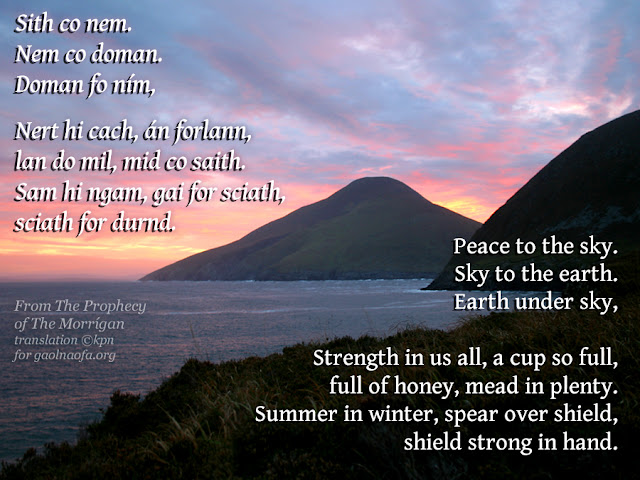"Those who made off with the sea god left a wooden cross with the words 'You shall have no other gods before me' in its place." - Fiona Murray BBC News NI,
Game of Thrones sculptor's sea god statue stolen from mountain.
This statue of the Celtic sea god, Manannán Mac Lir is a religious icon. People have been leaving offerings there, tourists make pilgrimage, photographers have spread his image worldwide, and local people still tell the stories of his protection of the land and relationship with the sea and local weather patterns.
Apparently, some people who pretend to be Christians don't like this.
Whether this was done by art thieves looking to lay a false trail, or by intolerant people who betray their supposed lord's message of tolerance and love, this is a hate crime.
Manannán is the guardian of the land on the Isle of Man and in other Gaelic areas. He is also one of the founding forces, guides, and guardians of the Celtic Reconstructionist and Gaelic Polytheist communities. For him to be out in Nature, high on a mountian, overlooking the sea, was profoundly moving, and those who have stolen him have desecrated something sacred.
If this was really done by those who claim to be Christians, this is a relgiously-motivated hate crime against a minority spirituality. For Irish people, even those who consider themselves Christian, or of another faith or no religious belief, Manannán is part of our history and culture, and this is a crime against all the Irish people who still respect history, culture, and the spirits of the land, sky and sea.
Our prayers are with the sculptor and all the people - local and worldwide - who are shocked and hurt by this crime. Our prayers are also with everyone investigating this and searching for the statue, that they quickly recover the statue and bring the criminals to justice.
So be it.
Sláinte Mhaith.
If you have any information on this crime or the whereabouts of the stolen statue, please speak out. Talk to the members in your community, use social media, and let's take care of this. Feel free to reuse this meme if you like. This was a deliberate act of desecration, involving several physically strong people, a lot of noise, power tools, several hours at the statue, a truck or van, and planning. Someone who doesn't agree with this hate crime has to have seen or heard something. We pray they come forth now.
Sculpture by
John Darren Sutton
Top photo courtesy the artist via
his facebook page
Photos for "Missing" meme and Aurora Borealis copyright
Neil Maroney, who I hope will understand re-use with credit, given the situation.
ETA: For more on Manannán, and a song to call him home, I am reposting our video about him that we released last summer.
If you're looking for the lyrics to sing along, the first part of the track is a traditional Manx song called "C'raad ta'n Ree?" which you can find a version of on the Gaol Naofa website:
http://www.gaolnaofa.org/library/music/craad-tan-ree/
The second part is a song/prayer, which Breesha Maddrell notes is still popular with kids today:
https://thesession.org/tunes/12899
















